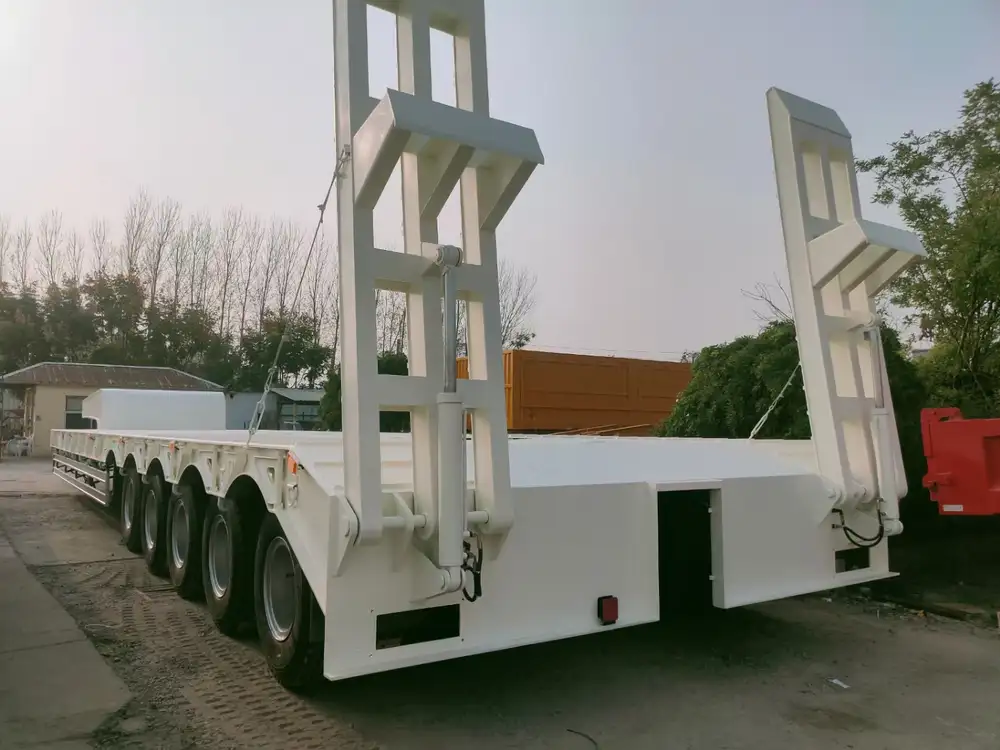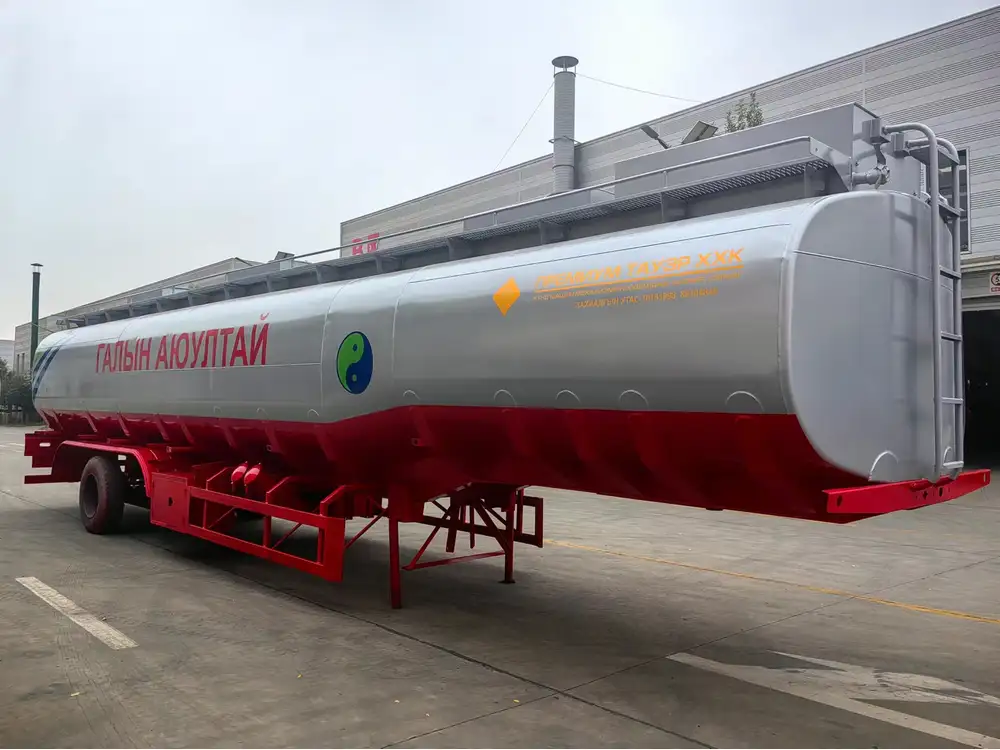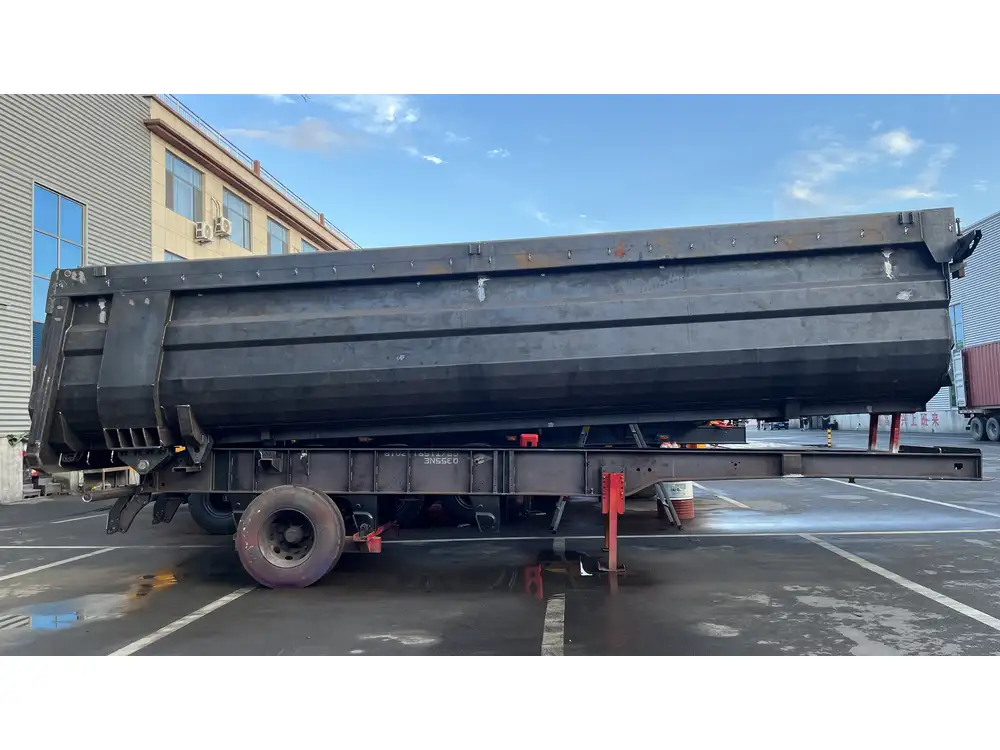In the dynamic world of logistics and transportation, understanding the nuances of tanker truck dimensions is paramount for efficiency, compliance, and operational success. At CarMax Vehicle, we specialize in designing and manufacturing tanker trailers that meet diverse industry needs, ensuring our clients stay ahead in a competitive market. This comprehensive guide delves into the intricate aspects of tanker truck dimensions, providing valuable insights to help you make informed decisions.
Table of Contents
- Understanding Tanker Truck Dimensions
- Types of Tanker Trucks and Their Dimensions
- Key Factors Influencing Tanker Truck Dimensions
- Regulations Governing Tanker Truck Dimensions
- Optimal Dimensions for Efficiency and Safety
- Customizing Tanker Truck Dimensions with CarMax Trailer
- Benefits of Choosing the Right Tanker Truck Dimensions
- Future Trends in Tanker Truck Design and Dimensions
- Conclusion
- Frequently Asked Questions
Understanding Tanker Truck Dimensions
Tanker trucks are specialized vehicles designed to transport liquids, gases, and other fluid commodities safely and efficiently. The dimensions of these trucks are critical as they affect not only the volume of cargo carried but also compliance with road regulations, maneuverability, and overall operational efficiency.

Key Dimension Metrics
- Length: Typically ranges between 20 to 40 feet, depending on the cargo and regulatory allowances.
- Width: Standard widths are usually between 8 to 8.5 feet, adhering to most interstate regulations.
- Height: Varies based on cargo type; common heights range from 10 to 13 feet to accommodate storage and transportation needs.
- Weight: The gross vehicle weight (GVW) must comply with legal limits, often around 80,000 pounds, including the trailer.
Types of Tanker Trucks and Their Dimensions
Different types of tanker trucks cater to diverse industries and cargo types. Understanding each type’s specific dimensions helps in selecting the right vehicle for your transportation needs.
Straight Tankers
Dimensions:
- Length: 25-30 feet
- Capacity: 5,000 to 11,600 gallons
Straight tankers have an integrated chassis and tank, making them robust and ideal for transporting large volumes of liquid over long distances. Their streamlined design ensures ease of loading and unloading, suitable for industries like fuel distribution.

Pre-Hose Tankers
Dimensions:
- Length: 20-25 feet
- Capacity: 3,000 to 6,000 gallons
Pre-hose tankers feature a platform that allows hoses to be pre-attached during loading, enhancing efficiency by reducing the need for manual hose connections at the delivery site. These are commonly used in the petroleum industry for diesel and gasoline delivery.
Semi-Truck Mounted Tankers
Dimensions:
- Length: 15-24 feet
- Capacity: 2,500 to 6,000 gallons
Mounted on semi-trailers, these tankers offer flexibility and are often utilized for shorter routes and urban deliveries. Their detachable trailers allow for easy interchange and maintenance, making them a preferred choice for regional businesses.
Key Factors Influencing Tanker Truck Dimensions
Selecting the appropriate tanker truck dimensions involves considering multiple factors that impact functionality, compliance, and cost.

Capacity Requirements
The volume of cargo to be transported is a primary determinant of tanker size. Larger capacities reduce the number of trips required, enhancing operational efficiency but may require larger storage facilities and stricter adherence to weight regulations.
Regulatory Standards
Compliance with local, state, and federal regulations dictates the permissible dimensions and weight limits. These standards ensure safety on roads, prevent infrastructure damage, and promote uniformity across transportation fleets.
Cargo Type
Different liquids and gases have varying storage requirements. Factors like volatility, temperature sensitivity, and corrosiveness influence the tanker’s design, material choice, and dimension specifications to ensure safe and efficient transport.

Regulations Governing Tanker Truck Dimensions
Adhering to regulations is non-negotiable in the transportation industry. Here’s a breakdown of the key regulatory frameworks affecting tanker truck dimensions.
National Standards
In the United States, the Department of Transportation (DOT) sets stringent guidelines on vehicle dimensions, including aspect ratios and weight limits. Compliance ensures that tanker trucks can safely navigate highways, bridges, and tunnels without causing undue strain on infrastructure.
International Compliance
For cross-border transportation, international standards such as the European Agreement Concerning the International Carriage of Dangerous Goods by Road (ADR) come into play. These regulations harmonize vehicle standards across countries, facilitating smoother international logistics operations.

Optimal Dimensions for Efficiency and Safety
Balancing capacity with maneuverability and safety is crucial in designing tanker truck dimensions.
Length, Width, and Height Considerations
- Length: Maximizing length without exceeding turning radius or parking constraints is essential.
- Width: Standard widths optimize road usage while allowing for safe passage and loading operations.
- Height: Ensuring sufficient headroom for cargo while maintaining stability is critical, especially when transporting tall containers or under varying weather conditions.
Weight Distribution
Proper weight distribution minimizes the risk of accidents and wear on the vehicle. Uniform distribution across axles ensures adherence to weight regulations and prolongs the lifespan of the tanker truck.

Customizing Tanker Truck Dimensions with CarMax Trailer
At CarMax Trailer, customization is at the heart of our manufacturing process. We understand that each client has unique requirements, and our bespoke solutions ensure optimal performance and compliance.
Tailored Solutions
Whether you need a specific capacity, specialized materials, or unique design features, our team works closely with you to develop a tanker truck that aligns with your operational goals. Custom dimensions enhance compatibility with your existing fleet and infrastructure, improving overall efficiency.
Advanced Manufacturing Techniques
Utilizing state-of-the-art technology and precision engineering, CarMax Trailer ensures that every tanker truck meets the highest standards of quality and dimensional accuracy. Our manufacturing processes allow for flexibility in design adjustments, accommodating varying industry needs seamlessly.

Benefits of Choosing the Right Tanker Truck Dimensions
Selecting the appropriate dimensions for your tanker truck yields multiple benefits that extend beyond mere compliance.
Operational Efficiency
Optimally sized tanker trucks can carry maximum cargo per trip, reducing fuel consumption and operational costs. Enhanced capacity leads to fewer trips, streamlining logistics and increasing delivery speed.
Cost-Effectiveness
Investing in tanker trucks with the right dimensions ensures long-term savings by minimizing maintenance costs, reducing the likelihood of regulatory fines, and maximizing payload efficiency.

Enhanced Safety
Proper dimensions contribute to vehicle stability, prevent overloading, and ensure safe handling of hazardous materials. This reduces the risk of accidents, protecting both the driver and the public.
Future Trends in Tanker Truck Design and Dimensions
The transportation industry is continually evolving, with innovations shaping the future of tanker truck dimensions and design.
Sustainable Materials
As environmental concerns rise, the use of eco-friendly materials in tanker construction is becoming prevalent. Lightweight, durable materials decrease overall vehicle weight, enhancing fuel efficiency and reducing emissions.

Smart Technology Integration
Incorporating smart technologies, such as GPS tracking, telematics, and automated monitoring systems, revolutionizes tanker truck operations. These advancements provide real-time data on dimensions, load distribution, and vehicle performance, enabling proactive management and maintenance.
Conclusion
Understanding and optimizing tanker truck dimensions is integral to the success of transportation operations. At CarMax Vehicle, we commit to delivering high-quality, customizable tanker trailers that meet the diverse needs of our clients. By focusing on precise dimensions, regulatory compliance, and innovative design, we ensure that our tanker trucks enhance efficiency, safety, and cost-effectiveness in your logistics processes.
Frequently Asked Questions
1. What are the standard dimensions for tanker trucks in the United States?
Standard tanker truck dimensions in the U.S. typically range from 20 to 40 feet in length, 8 to 8.5 feet in width, and 10 to 13 feet in height. The gross vehicle weight is generally limited to 80,000 pounds, including the trailer.
2. How do tanker truck dimensions affect fuel efficiency?
Larger tanker trucks can carry more cargo per trip, reducing the number of trips needed and thereby improving overall fuel efficiency. However, overly large dimensions may lead to increased aerodynamic drag, offsetting some efficiency gains.
3. Can tanker truck dimensions be customized for specific industries?
Yes, companies like CarMax Trailer specialize in customizing tanker truck dimensions to meet the unique requirements of various industries, ensuring optimal performance and compliance with industry-specific regulations.
4. What materials are commonly used in manufacturing tanker trucks to ensure durability?
Tanker trucks are often constructed from high-strength steel or aluminum alloys. For specialized applications, materials like stainless steel or composite materials may be used to handle corrosive or hazardous cargos.
5. How do international regulations impact the design of tanker truck dimensions?
International regulations, such as the ADR in Europe, require tanker trucks to meet specific dimensional and safety standards to facilitate cross-border transportation. Compliance ensures that the vehicles can operate seamlessly across different countries, adhering to uniform safety and operational protocols.



